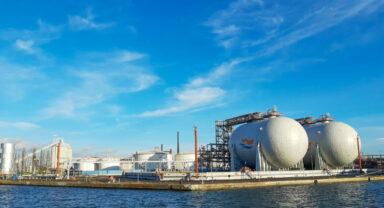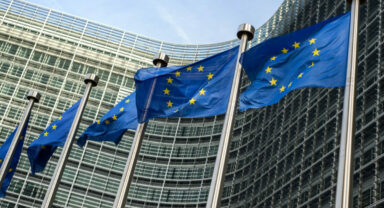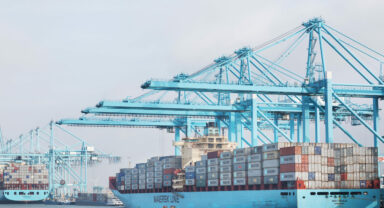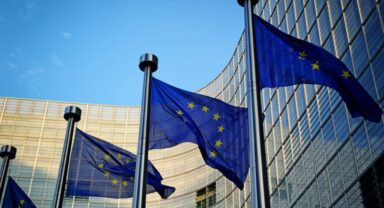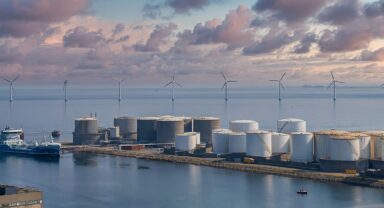What if your organisation could help shape how the European Union spends over two trillion euros?
This is not just a theoretical question. The institutions in Brussels are already laying the foundations for the next Multiannual Financial Framework[1] – the European Union’s long-term budget covering the years 2028 to 2034. The decisions made in the coming months will define the direction of future funding programmes and the areas where European investment will concentrate.
At FirstBlue, we support organisations across Europe to identify relevant funding opportunities and prepare strong, timely applications. With the next framework approaching, the moment to start preparing is now.
💡 This is a live webpage, and we will keep it updated with the latest developments, proposals, and decisions related to the Multiannual Financial Framework. Bookmark this page to stay informed.
What Is the Multiannual Financial Framework?
The Multiannual Financial Framework is more than just a budget. It sets the course for how the European Union will support its political, economic and societal goals over a seven-year period. The framework defines not only how much money will be spent, but what policy areas will receive that funding.
From climate innovation and research to agriculture, education, digital transformation and security, the framework ensures the continuity and predictability of flagship programmes such as Horizon Europe, Erasmus Plus, the Common Agricultural Policy (CAP) and LIFE.
A new addition is expected to feature prominently: the European Competitiveness Fund[2]. This instrument is designed to channel investment into critical technologies and industries, including clean energy, artificial intelligence and digital infrastructure, helping strengthen Europe’s economic sovereignty.
For grant-seeking organisations, this framework is not a distant institutional exercise, it is the starting point of where funding opportunities will open up.
Timeline: What to Expect and When
The European Commission is expected to publish its legislative proposal for the new framework in July 2025. This will be followed by negotiations among Member States and the European Parliament, with an agreement anticipated by the end of 2026. An overview of the MFF adoption timeline is shown in Figure 1.

Figure 1: MFF Adoption Timeline
The key steps include:
- First half of 2025 → Final consultations and stakeholder input
- July 2025 → Publication of the European Commission proposal
- Late 2025 to 2026 → Negotiations among Member States and the European Parliament
- End of 2026 → Political agreement expected
- 2027 → Final vote and adoption by the European Parliament
- 2028 → The new Multiannual Financial Framework comes into effect
- Around 2031 → Mid-term review and potential adjustments
At FirstBlue, we closely follow these developments to ensure that our clients are aligned with the upcoming funding landscape, not reacting to it once the programmes are already set in motion.
Looking Ahead: What’s Changing?
The upcoming framework is expected to reflect a shifting geopolitical and economic context. Anticipated changes include:
📌 The European Competitiveness Fund
This new fund will likely support high-impact investments in key strategic areas such as advanced manufacturing, green technology and semiconductors. It will complement existing programmes while introducing new funding channels for priority sectors.
📌 Increased Flexibility
The European Union aims to be more agile in responding to future challenges. This may involve fewer fixed budget categories and more rapid response instruments — a direct response to lessons learned from recent crises such as the COVID-19 pandemic and the war in Ukraine. European Commission President Ursula von der Leyen has proposed that the next Multiannual Financial Framework (2028–2034) adopt a model similar to the National Recovery Plans, linking funding disbursements to the achievement of specific objectives and milestones. She emphasized the need for a “more flexible, agile and responsive MFF,” highlighting that currently, 90% of the budget is pre-allocated, which hampers timely action on sudden challenges[3].
📌 Fiscal Adjustments
The repayment of funds borrowed under the Next Generation European Union recovery plan will start during this period[4]. This places pressure on other parts of the budget, particularly longstanding programmes such as agricultural support.
📌 Stronger Emphasis on Security and Resilience
Given continued geopolitical developments, including the war in Ukraine, there is strong momentum to dedicate more resources to external border management, defence cooperation and strategic resilience. The new 2025 partnership between the European Commission and the European Defence Agency (EDA) confirms this trend as the EDA is taking a bigger role in implementing the European Defence Fund, with a clear focus on stronger defence cooperation and strategic autonomy[5].
How Should Organisations Prepare?
At FirstBlue, we specialise in helping organisations prepare for and access European funding. Our role is to ensure you are in the best position to respond to future calls for proposals with strong, strategically aligned applications.
✔️ Understand Emerging Priorities
We help you assess how your current or future projects fit into the European Union’s long-term objectives, including the themes expected to be prioritised under the new framework.
✔️ Prepare in Advance
Successful applications are not built overnight. We support the development of high-quality project ideas, the identification of suitable partners, and the drafting of compelling applications that are ready to go once funding calls open.
✔️ Engage Constructively
Organisations that wish to present their sector’s priorities or contribute to policy discussions can do so through white papers, consultation responses, and expert roundtables. For this, our trusted partner Publyon offers support in public affairs, providing guidance on how to participate meaningfully in the policy dialogue in Brussels and with national stakeholders.
Why It Matters
The Multiannual Financial Framework defines how the European Union turns its political objectives into practical investments. Understanding this framework, and preparing accordingly, ensures that your organisation does not just keep up with change, but is ready to contribute to it.
Whether you are a local authority, a research institute, a business, or a non-profit organisation, the upcoming framework will open new doors. The key is to start preparing today, not tomorrow.
Contact
Ready to unlock new European funding opportunities for your organisation?
📩 Contact the FirstBlue team in Brussels:
Or take a look at our services to learn more about our grant management services.
📌 Interested in policy engagement or visibility in Brussels? Visit Publyon to explore their public affairs support.
[1] Multiannual financial framework | Fact Sheets on the European Union | European Parliament
[2] Parliamentary question | The European Competitiveness Fund: strengthening EU leadership in strategic technologies | E-000297/2025 | European Parliament
[3] Von der Leyen calls for EU budget based on NRRP model, linking funds to results
[4] NextGenerationEU – European Commission
[5] European Commission and European Defence Agency sign new partnership agreement – EDA takes on more EDF projects – European Commission


